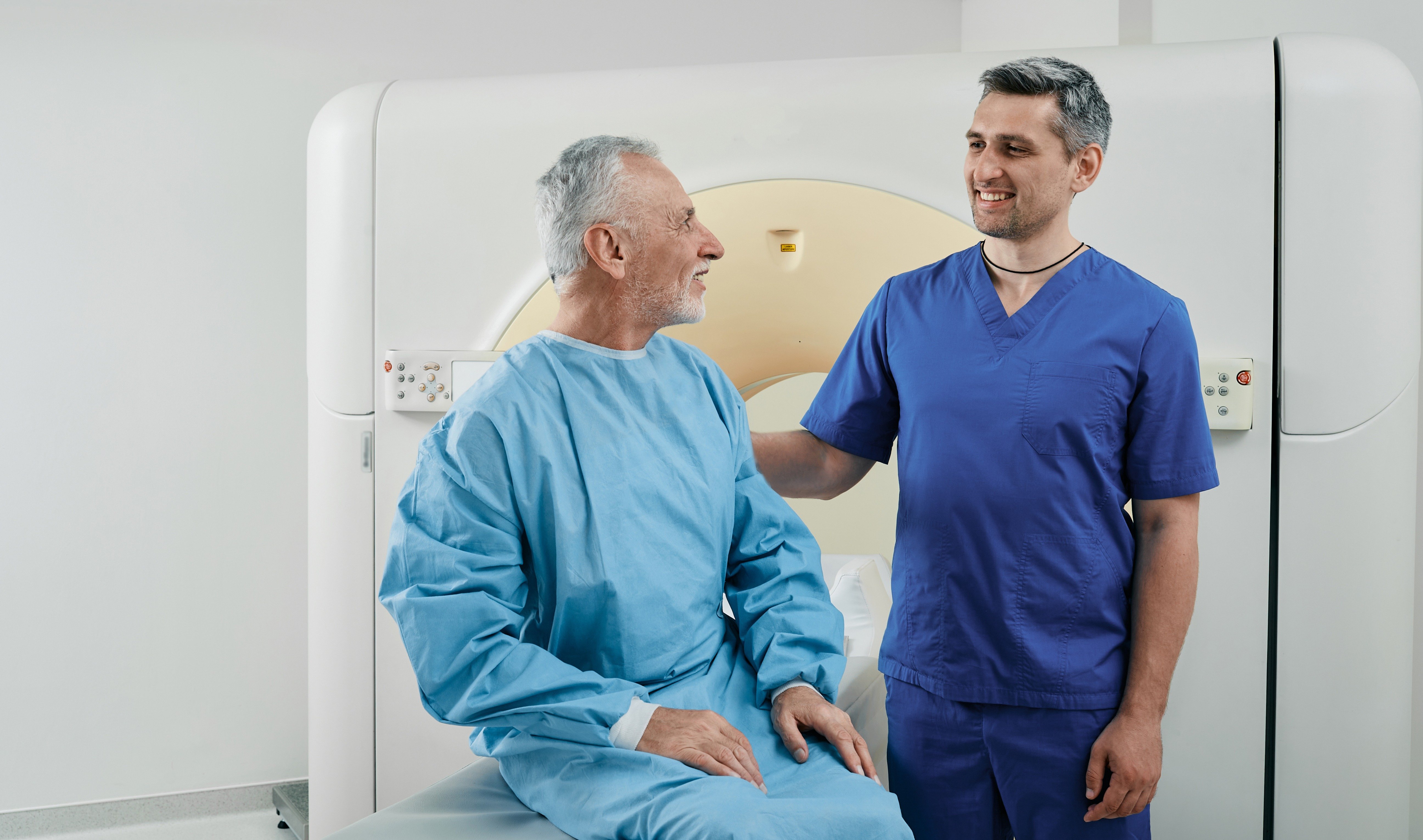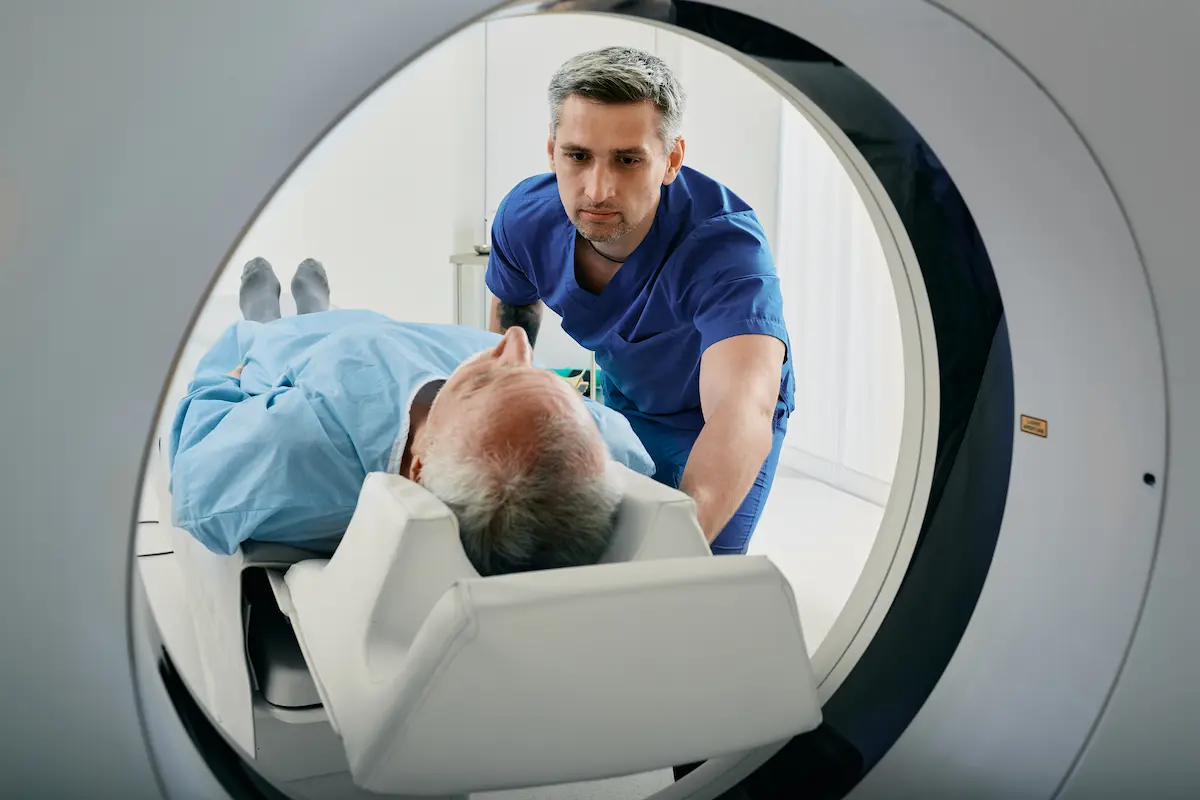If you’re interested in learning about how to become an MRI technologist, this blog will cover everything you need to know. From understanding more about what the role entails to common MRI tech career paths, we’ll dive into all the essential information you need when considering new job opportunities.
- What is an MRI technologist?
- Common tasks for an MRI technologist
- Average salary for an MRI technologist
- Typical work environments for MRI technologists
- Skills needed to become an MRI technologist
- Steps to become an MRI technologist
- What an MRI tech career path could look like for you
- Search our open MRI tech jobs today
What is an MRI technologist?
An MRI technologist, or MRI tech, is responsible for capturing images of a patient's internal structures so that radiologists can determine if they have any medical conditions that need to be treated. They play an important role in healthcare because they capture the images needed to diagnose and treat patients early so they can continue to live healthy lives.
Common tasks for an MRI technologist
MRI technologists have many responsibilities in the workplace, such as:
- Preparing patients for their procedures
- Ensuring the safety of patients
- Positioning patients correctly within MRI machines
- Monitoring the imaging process
- Assisting radiologists in interpreting results
Average salary for an MRI technologist
In the United States, MRI technologists can earn an annual salary ranging anywhere from $60,000 to $100,000. This number can vary depending on experience, location, healthcare facility, and other factors. Some experienced MRI technologists can earn even higher salaries, especially if they choose to undergo a specialty.
Typical work environments for MRI technologists
MRI techs can work in a variety of settings, including:
- Hospitals
- Outpatient imaging centers
- Diagnostic imaging centers
- Clinics
- Urgent care centers
- Research medical centers
These healthcare professionals are often in fast-paced environments where they are expected to work closely and cohesively with radiologists and other medical workers.
Skills needed to become an MRI technologist
Common soft skills that MRI techs need to be successful include:
- Strong communication skills
- The ability to work well with others
- Attention to detail
- Critical thinking
Common technical skills consist of:
- Being able to operate MRI equipment
- Advanced anatomy and physiology knowledge
- Computer and tech skills
Interested in a radiology and imaging job?
Read our blog to learn more about the requirements, disciplines, and work settings for these allied health workers.

Steps to become an MRI technologist
Education requirements
To become an MRI technologist, at the very least, you’ll need to complete an associate's degree in radiologic technology or a related field. This typically takes two years and includes courses in anatomy, patient care, MRI imaging techniques, clinical training, and more.
After earning your degree, you need to pass an exam administered by the American Registry of Radiologic Technologists (ARRT) to obtain your certification in MRI technology.
Some employers may prefer candidates with a bachelor's degree or additional certifications, so you might consider this option to enhance your job prospects and potential earnings. A bachelor's degree will take four years but will allow for more hands-on experience. Additional certifications you might consider when boosting your potential earnings include:
- The American Registry of Magnetic Resonance Imaging Technologists (ARMRIT) certification
- The Magnetic Resonance Medical Director (MRMD) certification
- The Magnetic Resonance Safety Expert (MRSE) certification
Experience
To become an MRI technologist, you need plenty of experience from clinicals, which you’ll get the chance to gain during the program you decide to enroll in.
During clinicals, you’ll learn how to perform MRI scans, operate MRI machines, and work with patients. Additionally, you’ll be expected to provide patient care and understand the scanned images created. Clinicals are essential for gaining experience and enhancing the quality of care you provide your patients. This will not only greatly boost your skill set, but it will also make you a more valuable staff member.
Certifications
As mentioned, you’ll need a certification from an accredited organization, such as the American Registry of Radiologic Technologists (ARRT). The ARRT certification requires passing an exam specifically for MRI technology.
Licenses
By completing the certification previously mentioned, you will obtain your license to become an MRI technologist. However, it’s important to check your state’s requirements and regulations, as they differ in various locations. Additionally, your license will only be valid for one to three years depending on the state you practice in. Be sure to stay up to date and complete the required continuing education so your license doesn’t expire.
What an MRI tech career path could look like for you
MRI techs have the option to explore several different career paths. Whether you want to specialize in a certain area or take on a leadership role, there are plenty of options to consider. Below you’ll find the different MRI tech career path opportunities:
Specialized roles
Pediatric MRI: This role involves helping younger patients with the MRI process, which can sometimes be challenging for anxious children who struggle to stay still for extended periods. Pediatric MRI technologists need to be highly empathetic so that young patients feel safe and cared for during a scan that might make them nervous.
Interventional MRI: Someone in this specialization will assist radiologists with minimally invasive procedures, such as biopsies or catheter installations. This role is especially important for radiologists because it allows them to instantly see patients' internal structures while performing procedures, making the process smoother and quicker.
Magnetic resonance safety officer (MRSO): An MRSO is responsible for minimizing risks in a facility by implementing and enforcing safety protocols. Someone in this role will also educate other staff members and patients about MRI safety, as well as monitor how well these safety protocols are being followed. These healthcare professionals are essential for facilities due to the serious nature of these highly magnetic machines.
Leadership roles
Chief technologist: Leadership skills are essential for this position, as chief technologists supervise all other MRI technologists and oversee technical operations within the department. Chief technologists also often collaborate with other departments to promote efficiency in the facility they work within.
MRI department manager/director: Also responsible for managing staff members, these healthcare professionals play a vital role in the radiology department by maintaining equipment, handling the budget, communicating with other teams and departments, and more.
Educator roles
Clinical instructor: These educators play an important role in the training process because they provide their students with hands-on experience with MRI equipment in practical settings. Clinical instructors also provide training in technical skills while assessing the performance of their students.
Continuing education instructor: If you’re more interested in teaching other MRI techs, you might consider becoming an instructor for a continuing education program. Working in this role allows you to educate MRI technologists about any new updates and practices used in the field.
Program director: Different from other educator roles, a program director is responsible for building the curriculum that MRI technologist education programs follow each year. This role is unique because program directors get to decide on what MRI tech students learn, coordinate where clinical rotations take place and manage faculty members in the program. Although people in this specialty have a lot on their plate, they find the role extremely rewarding as they get to teach others something that they’re passionate about.
Search our open MRI tech jobs today
We hope this blog has given you a better idea of the job outlook for MRI technologists, how to become one, and the many career paths you can take working in the field.
Search our open MRI tech jobs today if you’re looking to start your dream role with Favorite.
Ready to start your career with Favorite?
Whether you're looking for clinical or non-clinical roles, Favorite has a place for you. Search our open jobs today.


.jpeg)



